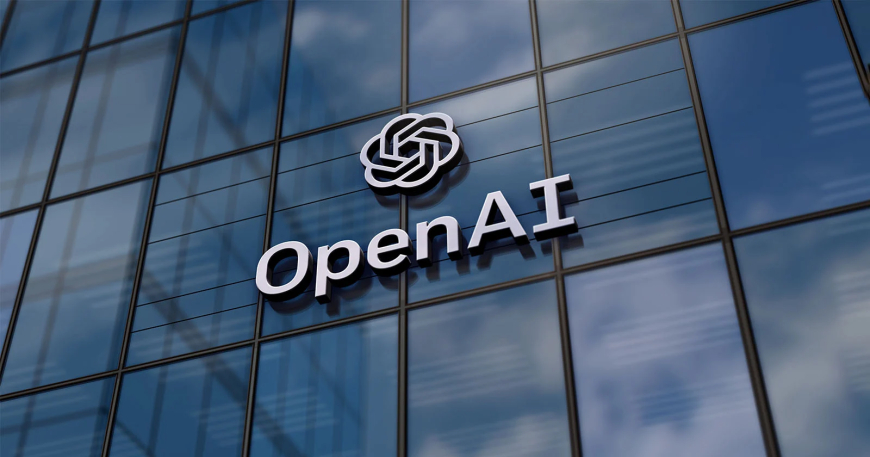OpenAI Goes Open-Source: U.S. Takes Strategic Leap in Global AI Race Against China
In a strategic move against China, OpenAI has released open-source AI models to bolster U.S. leadership in the global AI contract space.

In a bold strategic move, OpenAI has open-sourced several of its advanced artificial intelligence models, a decision widely seen as a geopolitical and technological countermeasure to China's rising capabilities in the AI sector. This development not only marks a significant shift in how AI technologies are shared but also underscores growing efforts by U.S. stakeholders to strengthen America’s position in the global AI race—especially in the defense and enterprise contract space.
A Calculated Response to China’s AI Surge
OpenAI’s open-source initiative comes at a critical time. The intensifying AI competition between the United States and China has prompted key players in the American tech ecosystem to rethink the role of accessibility, transparency, and innovation.
For months, lawmakers and national security experts have warned of China’s aggressive push in AI militarization and large-scale adoption. With Beijing channeling vast resources into its AI development pipeline—including surveillance systems, autonomous warfare platforms, and state-wide analytics—the United States has responded by doubling down on domestic innovation.
OpenAI’s release of open-source models is a direct extension of this counter-strategy. It allows U.S. developers, academic institutions, and startups to iterate faster and build more secure, trustworthy AI systems without relying on foreign frameworks.
What OpenAI Has Released
While specific model architectures and data sets are still under review, OpenAI has made available several scaled-down versions of its GPT-style models and reinforcement learning environments. These tools are designed for research and safe experimentation and are expected to be incorporated into civilian and government platforms.
According to sources close to the project, OpenAI has collaborated with select partners in academia and cybersecurity to ensure these models meet the nation’s safety protocols. The company’s focus remains on balancing accessibility with responsibility—preventing the misuse of open models while fostering innovation.
A representative from the Department of Commerce, speaking on background, confirmed that this open-sourcing initiative aligns with broader U.S. goals to dominate the AI contract space, both commercially and militarily.
Implications for U.S. Leadership in AI Contracts
This move isn't just about code—it’s about contracts. OpenAI’s models, now accessible to a broader range of public and private developers, significantly increase the United States' capability to build domain-specific AI solutions.
From defense contractors competing for Pentagon AI integration projects to healthcare providers automating diagnostics and logistics, the availability of open models is expected to accelerate development timelines and reduce barriers to entry.
The Biden-Trump tech policy continuum has pushed to secure more U.S.-based AI development in sensitive fields, and this open-sourcing initiative is seen as a cornerstone in achieving that vision.
For instance, OpenAI’s collaboration with Microsoft is expected to deepen through Azure-based deployment of open-source stacks tailored for government usage.
Ethical, Economic, and Policy Concerns
Despite the excitement surrounding OpenAI’s open-source turn, some critics have voiced concerns. AI ethicists warn of dual-use risks, where released models might be repurposed for malicious applications. OpenAI has reassured stakeholders that safety features and watermarking protocols are embedded in the distributed frameworks.
Economically, this move may disrupt proprietary AI companies who charge premiums for closed-source alternatives. With powerful models now freely available, industry players may need to shift toward service-oriented revenue models or offer premium functionalities over open cores.
There’s also growing discussion about open-sourcing and the potential rise of “AI nationalism,” where nations use transparent systems to cement global influence. In the context of current U.S.–China tensions, the open-source strategy may act as both a shield and a spear.
Industry Reaction and Global Ripple Effects
The announcement has triggered mixed but largely enthusiastic responses from the tech community. Industry analysts believe this will fast-track open AI development across sectors, from education and agriculture to cybersecurity and autonomous vehicles.
A recent report by McKinsey & Company estimated that open-source contributions could reduce AI deployment time by up to 40% in certain sectors, boosting U.S. economic resilience and global competitiveness.
Meanwhile, Chinese tech firms such as Baidu and Alibaba are reportedly assessing the impact of OpenAI’s release, with some expressing concern over a potential brain drain if developers worldwide shift their focus to U.S.-based tools.
Final Thoughts
OpenAI’s open-sourcing effort signals more than a technical decision—it is a strategic assertion of American leadership in one of the most consequential fields of this century. With this release, the United States aims not only to stay ahead in the global AI race but also to build a coalition of responsible innovation rooted in transparency and democratic values.
As policymakers, researchers, and developers engage with these new tools, one thing is clear: the future of AI is no longer locked behind corporate walls—it’s being forged in the open.











